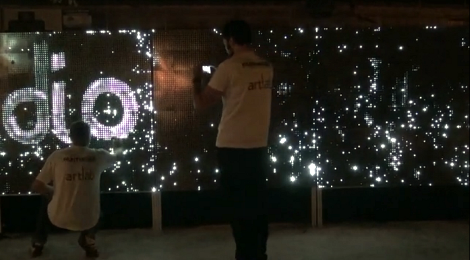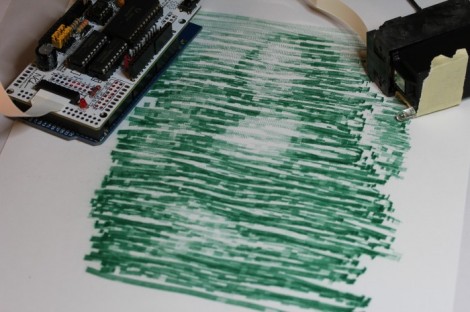
This art installation uses a fantastic concept. The wall can be painted using water as ink which lights up a huge grid of white LEDs. This offers a very wide range of interactive possibilities since water can be applied in so many ways. Grab a paint brush, wet your finger, use a squirt gun, or mist with a spray bottle and the lights will tell you where you hit the wall.
We’re hoping a reader who speaks both French and English might help out by posting a translation as a comment on the prototyping video. In it, [Antonin Fourneau] shows off the various prototypes that led to the final product and we’d love to know what he’s saying. But by seeing the prototypes, then watching the English promo video after the break we can make a pretty good guess. The boards have a hole that fits the flat-lens LEDs perfectly. This creates a mostly water tight seal to keep the liquid on one side while the leads are safe on the other. The water side has squiggly pads which allow droplets of water to complete an electrical connection.
Continue reading “Painting A Wall With Light Using Water As Ink”












